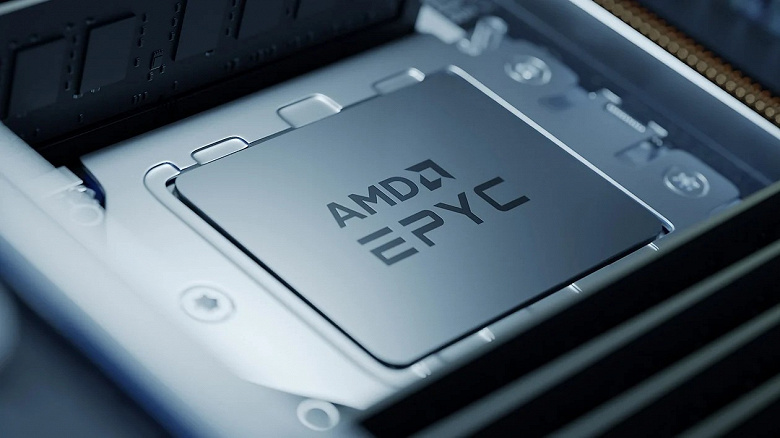Milan performance increase relative to Rome – 10 to 30 percent
Along with AMD Ryzen 5000 mobile APUs, the Epyc Milan server CPUs based on Zen3 architecture are due out in the first half of 2021. When exactly the premiere of these processors will take place is still unknown, but a list of characteristics of most representatives of the line has already appeared on the Web, and there is also data from various benchmarks that allow comparing the performance of Epyc Milan and Epyc Rome, as well as correlating the performance of Epyc Milan relative to the Intel Cascade Lake CPU. SP.

64 cores up to 3.7 GHz and 76% faster performance than the Xeon Platinum 8280L. Characteristics of AMD Epyc 7713 and other CPUs in the Milan line
If we compare the Epyc 7713 (Milan) with the Epyc 7742 (Rome), then there is a noticeable increase in the maximum frequency – 3.7 GHz versus 3.4 GHz, although the TDP value remained within the same 225 W. We have already seen this picture in the case of the desktop Ryzen 5000 on the Zen3 architecture: while maintaining the number of cores, threads, and TDP, the frequencies increased. The same will happen to Milan. But the prices, most likely, will not change, and here it is just right to pay attention to the Epyc 7713 test in Cinebench R23. The novelty scored 1215 points in a single-threaded test and 87,878 points in a multi-threaded one.
If we compare multi-threaded performance (and single-threaded for server CPUs is hardly taken into account by customers at all), the Epyc 7713 is 18% faster than the Ryzen Threadripper 3990X and 76% faster than the Xeon Platinum 8280L of the Cascade Lake-SP line. At the same time, if the price of Epyc 7713 turns out to be at the level of Epyc Rome 7742 (and, most likely, it will be), then Epyc 7713 will be almost twice as cheap. With performance, 76% more …
As for the comparison between Milan and Rome, there is a 10-30% breakdown in favor of a new generation CPU. The largest gain (up to 32%) in Boost mode with single-threaded performance, the smallest – with multi-threaded in Boost mode (9%).
In general, it is already clear that Milan will prove to be worthy successors to Rome. Intel will have a hard time before Ice Lake-SP is released: the blue has already promised that Ice Lake-SP will be faster than Rome, but they are unlikely to be able to compete with Milan, especially while maintaining the current pricing policy.








